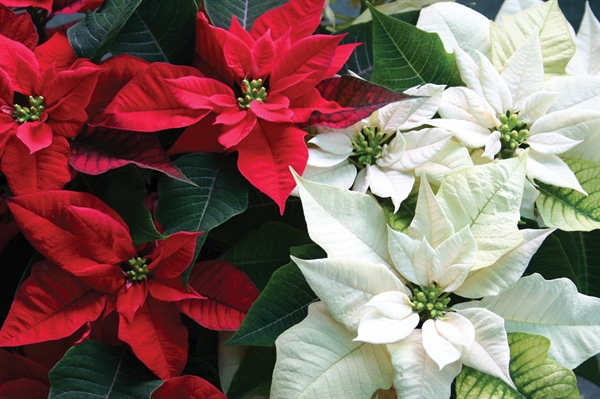
The holidays are rapidly approaching, and specialty potted plants make great gifts.
Caring for holiday plants can sometimes be a challenge, but the Virginia Cooperative Extension Service has some helpful tips.
Seasonal plants may not last and should be enjoyed while in season. When caring for them, keep in mind that these plants are typically grown in greenhouses, where temperatures are cool at night, light is adequate and air is moist. Improper water and light and excessive heat are the leading causes of failure in caring for gifted plants.
Poinsettias
Poinsettias require bright light and should be kept away from drafts. The ideal temperature should be between 65 and 70 degrees.
Plants should be well-watered, but not overwatered. The soil should dry between waterings.
To keep poinsettias flowering, try these tips:
After the showy flowers fade or fall, place the plant where it will receive indirect light and temperatures around 55 to 60 degrees.
Water sparingly, just enough to keep the stems from shriveling.
Cut the plant back to within five inches of the soil surface and re-pot in fresh soil. As soon as new growth begins, place the plant in a well-lit window.
After the danger of frost, place the pot outdoors in a partially shaded spot.
As nights grow cool, bring the plant indoors.
Continue to grow it in a sunny room with a night temperature of about 65 degrees.
Poinsettias bloom only during short days, so exclude artificial light, either by covering the plant with a light-proof box each evening or placing it in a dark room or closet for a minimum of 12 hours daily.
Plants need full light during the day, so return them to a sunny window. The short-day treatment should yield blooms between Dec. 1 and Christmas.
Amaryllis
To grow an amaryllis, keep the plant actively growing after it blooms. Plants should be placed in full sun with a nighttime temperature above 60 degrees. When the danger of frost passes, place the plants in the garden in a semi-shaded spot and continue to water.
Christmas cacti
Christmas cacti are budding in popularity thanks to their colorful, tubular flowers and relatively easy care.
Christmas cacti will develop buds and bloom if given bright light, short days and night temperatures between 55 and 65 degrees. They also bloom best when kept in a pot. Repotting is necessary about once every three years.
Full sunlight is beneficial in midwinter, but excessively bright light during summer months can make plants look pale and yellow.
Christmas cacti require less water from October through March than they do when actively growing from April to September. A rest period is important if the plants are to bloom abundantly.
Dormancy should be started about mid-September and continued for eight weeks. Be careful not to over-water the soil during the short days of winter.



